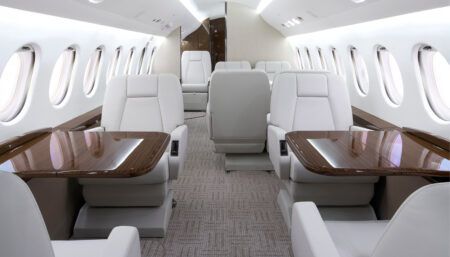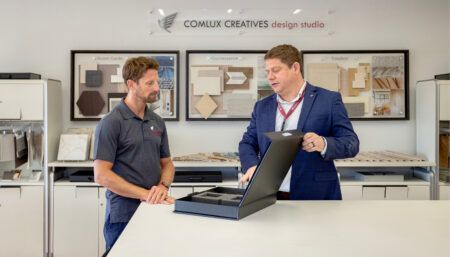An Airbus A310 has been converted to a Zero-G aircraft in Hamburg, Germany, following extensive modifications by Lufthansa Technik, having arrived as a former German government aircraft. It will be operated by French owner Novespace as a parabolic aircraft, in the name of space exploration and technology.
Some 1,300 modifications were required to convert the aircraft back to its original factory default state, as required by the European Aviation Safety Agency (EASA). The cabin refit then commenced, with the test area, which is approximately 20m long, proving particularly challenging.
This is the area where prospective astronauts will be able to experience weightlessness, for example, or where scientific investigations will take place. Extra powerful light installations were required, with care being taken to ensure that these would not pose a hazard for weightless passengers. Novespace will operate the aircraft from its home airport in Bordeaux, France, from May 2015.
“We chose Lufthansa Technik because they know this aircraft very well, they modified this aircraft a long time ago and have maintained it ever since,” said Christophe Mora, technical and operations director at Novespace. “They also offered us a good modification and C-check package and today we can see that they have been doing very good work.”
The German Aerospace Center (DLR) uses the converted A310 for zero gravity research. “We are very pleased that the new parabolic aircraft is well-maintained, thanks to the professional collaboration between Novespace and Lufthansa Technik, and is now ready for scientific flights, having been fitted with all the necessary conversions,” said Dr Ulrike Friedrich, head of parabolic flight projects. “Many researchers are already waiting impatiently to carry out their biological, physical and medical experiments with zero gravity.” Joint flight campaigns will be conducted by the German, French and European space agencies for the first time in May 2015.
“The EASA requirements were a real challenge when it came to demonstrating the structural integrity of this aircraft,” said Joerg Paisen, a project manager at Lufthansa Technik with responsibility for modifying the new parabolic aircraft. “It is solely down to the good interaction between the customer, engineering planning and the technicians from the different divisions that the project was implemented successfully.”
The principle of concurrent engineering was followed, with engineering activities, work planning and manual execution running largely in parallel. A team of 50 technicians was involved directly with the aircraft at Lufthansa Technik’s Hangar 5 in Hamburg.
The Zero-G aircraft is the third special-mission aircraft in a row for Lufthansa Technik. Before this, the Stratospheric Observatory for Infrared Astronomy (SOFIA), a joint project of NASA and the German Aerospace Center, was in Hamburg for several months for a major overhaul. On behalf of the Federal German Government, Lufthansa Technik also converted a Lufthansa A340-300 into an evacuation aircraft for highly contagious Ebola patients.
March 26, 2015




